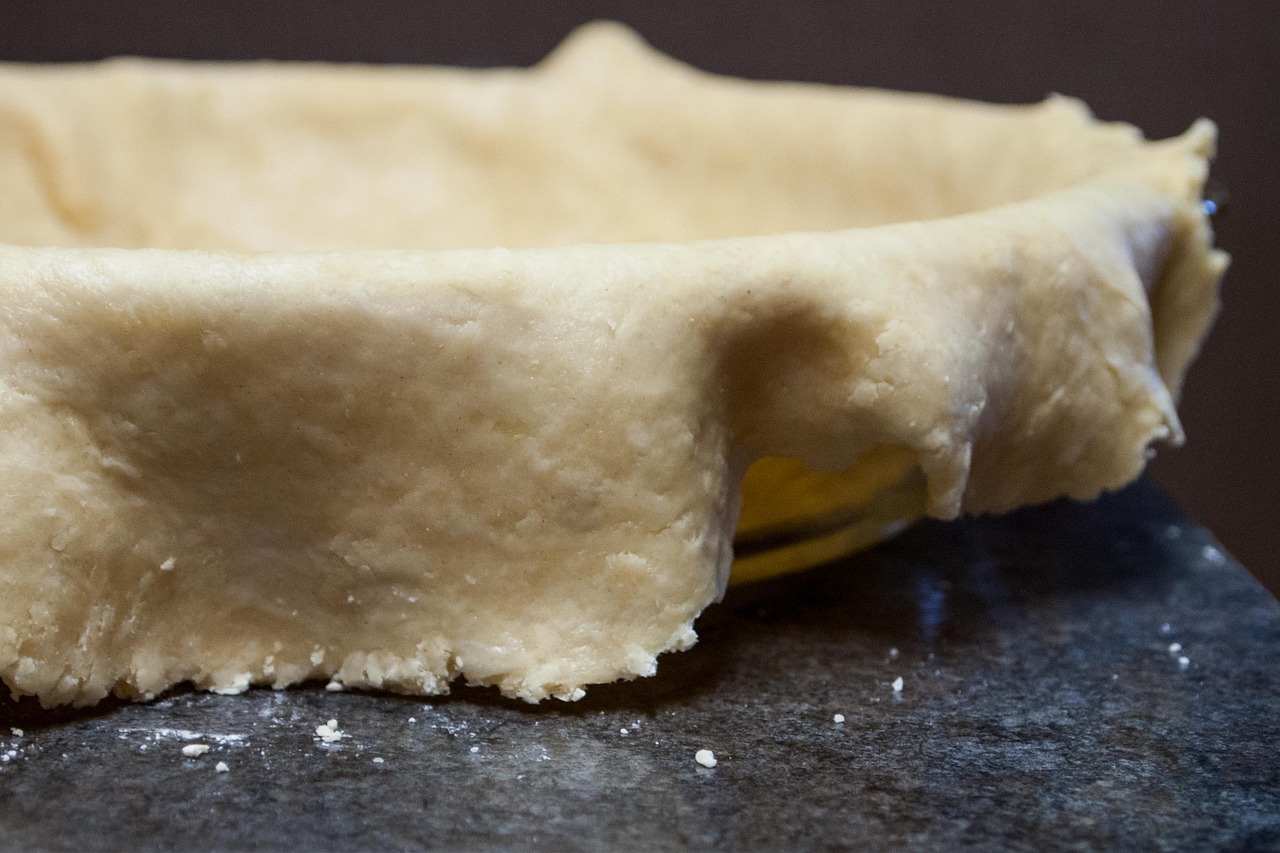I remember watching her roll the dough smoothly across the floured countertop, delicately peel up one edge until the whole circle followed, and lay the pie crust across the bottom of the pie plate. I watched it a thousand times. My mom made every kind of pie for every kind of occasion, but apple pie was sacred in her repertoire. My dad requested apple pie instead of cake for his birthday—which is an unforgivable betrayal of all chocolate cake if you ask me—and she saved apple pies for Valentine’s Day and their anniversary.
When my future husband began joining us for celebrations, he experienced the magic of her apple pie. “This is what I would want for my birthday, too,” Aaron said. “Your dad is genius.”
So the first year we were married, my mom came over to our tiny duplex while Aaron was at work and talked me through the First Annual Birthday Pie Baking Extravaganza. So many steps! So many techniques! This far exceeded my skill-set of Stouffers’ frozen lasagna. I stepped back and let her “show” me how to do it; a trick I learned early on and probably the reason I still don’t know how to successfully make most of the things she taught me. The pie went in the oven and came out absolutely perfect. Aaron was thrilled with his birthday “cake” and I had to take a bubble bath to relieve the stress of being in the kitchen for so long.
The following year’s birthday was quite different. My mom was out of town, so I was on my own for the Second Annual Birthday Pie Baking Extravaganza. Technically, I wasn’t “on my own,” because I was six months pregnant with our little surprise, and operating on all four emotional cylinders one-hundred percent of the time. To any clear-headed person, this was not the time to be baking a pie. I was not clear-headed.
I added the items to the mixer, I let the dough come together, I took it out to roll.
Too dry.
I added some water to the top of my dough mound. I tried to roll it.
Too wet.
I added some flour to my goo mound. I tried to roll it.
Too dry. More water. On and on the vicious cycle continued until the water I was adding was also mixed with my own tears of hysteria. It never looked like year-old dried-out Play-Doh when my mom made it!
I called my mom sobbing and she suggested I start over. Heck no, lady. That sounded like punishment.
I called Aaron to scream something along the lines of “YOU WON’T BE GETTING ANY BIRTHDAY PIE THIS YEAR SO YOUR BIRTHDAY IS RUINED,” to which he whispered, “Ok,” in the tiniest voice I’ve ever heard him use.
I looked around at my mess and my options. I was out of flour. I was probably out of water, too, with as much as I had added. I grabbed my keys and waddled my way to the car, which I drove directly to the neighborhood grocery store. Out of my mind, I rushed into the store and headed for the flour/water/miracle aisle, barely holding in my sobs.
Until I ran in to a neighbor. A sweet neighbor. A neighbor that was once a volunteer for our church youth group. He saw my face and stepped back, alarmed. “What’s wrong?” he asked, and regretted immediately, as I exploded every emotion I had been carrying all over him: “I CAN’T ******* make ******* pie crust!” The floodgates had been opened. The tears arrived in the middle of the store. People were looking.
My neighbor ignored the commotion I was making and stepped in, laid a hand on my arm and said, “Oh honey, don’t you know you can buy that?” and then led me to the pie crust section. An angel, this man.
That year’s birthday pie wasn’t even good with the bought crust, because I added a lot of anger, bitterness, and resentment directly into the filling. The birthday was over, the pie was humiliating, and I felt the next year looming in my future.
I dreaded each pie-baking extravaganza. I tend to avoid doing things that I haven’t conquered already, but each year my failure was on display. Some years the bottom wouldn’t be cooked through. Some years the crust was split apart due to dryness and over-handling. Some years I wouldn’t roll it thin enough.
All the years, though, I added my special ingredients—sometimes even extra resentment that he couldn’t just have darn chocolate cake like the rest of the world. Each time I called my mom and she gave me ways to improve whatever issue I had created.
I faced each pie like it was the first pie, that horrid monster. But what I didn’t realize is that with each pie failure, I picked up a new solution. I previously had to bake a pie with no children in the house (for their own safety), all my ingredients laid out in the order I would need them, and complete silence. This year, without realizing my progress, I baked a pie in a house filled with children—some not even my own!—no wax paper to aid in the rolling process because I forgot to get it at the store, and my pie plate still in the cupboard when I needed it. I only snapped at a kid once (mine, don’t worry) and then took a deep breath and apologized. The crust was a little thick so I adjusted. It split in half when I tried to lay it in the plate, so I rolled it back together. I topped it and put it in the oven, and didn’t once worry about how it was doing. I didn’t send subliminal messages to the pie about what I would do to it if it didn’t come out ok. I just let the pie do its thing.
This year’s pie came out like a pie. Nice crust thickness, nice browning on the top. I’m sure it could be better. I’m sure it will be better next year.
The real win is everything else; the wealth of knowledge I gathered up from each failure is what built this year’s pie. It was founded on the heritage and downfalls and tales of its pie ancestors. Its existence is my redemption.
And what do you know? It even tastes better without the resentment.
*****
Kelly Cheney is an eighth-grade English teacher, mom of daughters, and major nail polish enthusiast. She would love to hear from you via email at kncheney@gmail.com or you can follow her on Instagram @kncheney–as long as you’re strictly interested in pictures of aforementioned daughters and/or nail polish.





